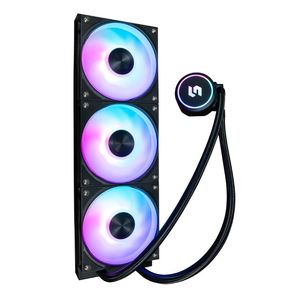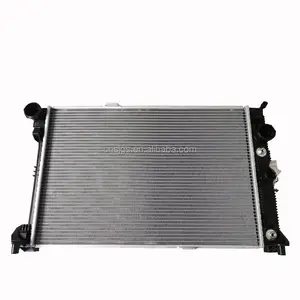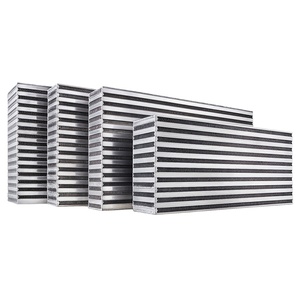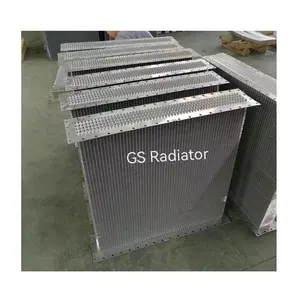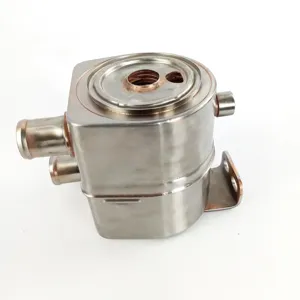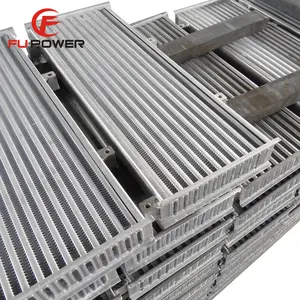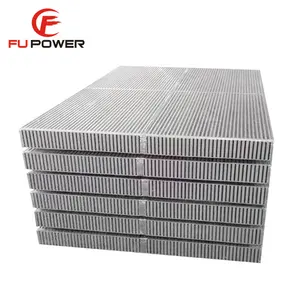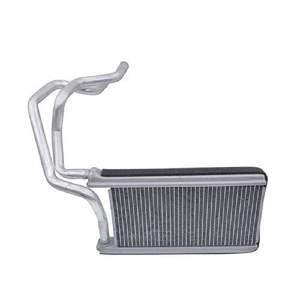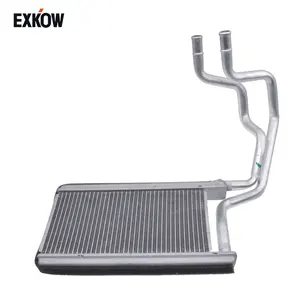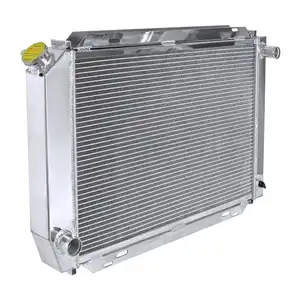3 Core Radiator Vs 4 Core






 Top sponsor listing
Top sponsor listing






 1/32
1/32










 1/24
1/24





 1/55
1/55




 1/5
1/5









 1/33
1/33








 1/17
1/17

About 3 core radiator vs 4 core
Where to Find 3 Core vs 4 Core Radiator Suppliers?
China remains the dominant hub for automotive radiator manufacturing, with specialized suppliers concentrated in industrial regions such as Hubei, Shanghai, Yangzhou, and Wuxi. These clusters offer mature supply chains for aluminum-core radiators, leveraging localized access to raw materials, CNC fabrication, and logistics networks. Key production zones feature vertically integrated facilities capable of producing both 3 core and 4 core radiator configurations at scale, supporting applications ranging from passenger vehicles to performance and racing systems.
Suppliers in this sector benefit from streamlined access to aluminum extrusion, brazing, and pressure-testing infrastructure, enabling cost-efficient production with lead times typically ranging from 15–30 days for standard orders. The regional ecosystem supports rapid prototyping and customization, particularly for OEMs and aftermarket distributors. Buyers gain access to competitive pricing—driven by 20–30% lower labor and material costs compared to Western manufacturers—as well as scalability for bulk procurement and tailored engineering solutions.
How to Choose 3 Core vs 4 Core Radiator Suppliers?
Procurement decisions should be guided by technical capability, quality assurance, and transaction reliability:
Technical & Material Specifications
Verify core construction materials (typically T3003 or 6061 aluminum alloys) and fin density per inch (FPI), which directly impact heat dissipation efficiency. 4 core radiators generally provide higher thermal capacity than 3 core units, making them suitable for high-performance or heavy-duty applications. Confirm compatibility with vehicle make, model, and engine type through detailed fitment data. Suppliers offering CNC-machined tanks, multi-pass flow designs, and corrosion-resistant coatings demonstrate advanced engineering capabilities.
Production & Customization Capacity
Assess supplier flexibility in customization:
- Core thickness, row count (3 or 4), inlet/outlet diameter, and mounting configuration
- Integration of electric or mechanical fans, shrouds, and transmission oil coolers
- Branding options including laser-etched logos, custom packaging, and product labeling
Prioritize suppliers with documented R&D capabilities and CAD/CAM design support for non-standard applications.
Quality Control & Compliance
Demand evidence of pressure testing protocols (standard: 1.2–1.8 bar) and leak detection procedures. While formal ISO 9001 certification is not explicitly stated in available data, consistent on-time delivery rates above 90% and response times under 6 hours indicate operational discipline. For export compliance, ensure radiators meet cooling system standards applicable to target markets, including E-marking for Europe or DOT-influenced specifications for North America.
What Are the Best 3 Core vs 4 Core Radiator Suppliers?
| Company Name | Main Products | Customization Options | On-Time Delivery | Reorder Rate | Response Time | Online Revenue | Min. Order Quantity |
|---|---|---|---|---|---|---|---|
| Hubei Shuangju Industry & Trade Co., Ltd. | Radiators, Air Condensers, AC Systems | Size, logo, packaging, label, graphic | 66% | 40% | ≤2h | US $20,000+ | Varies by product |
| Shanghai Speedmaster Auto Parts Co., Ltd. | Radiators, Rubber Hoses, Cooling Systems | Limited customization noted | 89% | <15% | ≤6h | US $60,000+ | 1–10 pieces |
| Yangzhou Benos Auto Parts Co., Ltd. | Radiators, Aluminum Cores, Fan Kits | Color, fan inclusion, thickness, row count, core dimensions, CNC machining | 100% | <15% | ≤4h | US $30,000+ | 2 pieces |
| Yangzhou Linte Auto Parts Co., Ltd. | Radiators | Not specified | - | <15% | ≤5h | US $100+ | 30 pieces |
| Wuxi Jiusheng Heat Exchanger Co., Ltd. | Radiators, Intercoolers, Heat Exchangers | Custom core design, material, weight, dimensions | 100% | <15% | ≤2h | US $50,000+ | 1 kg – 15 sets |
Performance Analysis
Yangzhou Benos Auto Parts and Wuxi Jiusheng stand out for 100% on-time delivery and comprehensive customization, making them ideal for buyers requiring precision-engineered 3 or 4 core radiators with strict thermal performance targets. Hubei Shuangju exhibits a high reorder rate (40%), suggesting strong customer retention, though its lower delivery performance warrants closer shipment monitoring. Shanghai Speedmaster offers low MOQs starting at 1 piece, beneficial for niche or replacement market sourcing. Wuxi Jiusheng’s expertise in heat exchangers indicates robust thermal design proficiency, particularly for industrial or hybrid cooling systems. Buyers should prioritize suppliers with verifiable testing records and scalable output for long-term contracts.
FAQs
What is the difference between 3 core and 4 core radiators?
A 3 core radiator contains three layers of tubing and fins, while a 4 core unit has four. The additional core increases surface area and coolant capacity, enhancing heat dissipation. 4 core radiators are typically used in high-performance, towing, or off-road applications where thermal load is greater. However, they may require modifications to fit standard mounting spaces and can increase airflow resistance if not properly designed.
What are typical MOQs for 3 and 4 core radiators?
MOQs vary significantly by supplier. Some offer as low as 1–2 pieces for sample testing or aftermarket sales, while others require 30+ units for bulk orders. Manufacturers like Wuxi Jiusheng also accept material-based orders (e.g., per kilogram of aluminum core), catering to OEMs with integrated assembly lines.
How long do radiator production and shipping take?
Production lead time averages 15–25 days for customized units, depending on complexity. Standard models may ship within 7–10 days. Add 10–20 days for international air or sea freight, depending on destination and incoterm. Expedited production is available from select suppliers upon request.
Can suppliers provide test reports or samples?
Yes, reputable suppliers offer sample units for validation. Pressure and flow testing data should be available upon request. Buyers are advised to conduct independent thermal performance evaluations before scaling procurement. Sample costs may apply but are often credited toward first bulk orders.
What materials are used in 3 and 4 core radiators?
Most modern radiators use aluminum cores with plastic or aluminum end tanks due to their lightweight and high thermal conductivity. Aluminum alloys such as 3003/6061 are standard for tubes and fins. Brazing is the primary joining method, ensuring durability under thermal cycling. Some industrial variants use copper-brass construction, though these are less common in current production.





